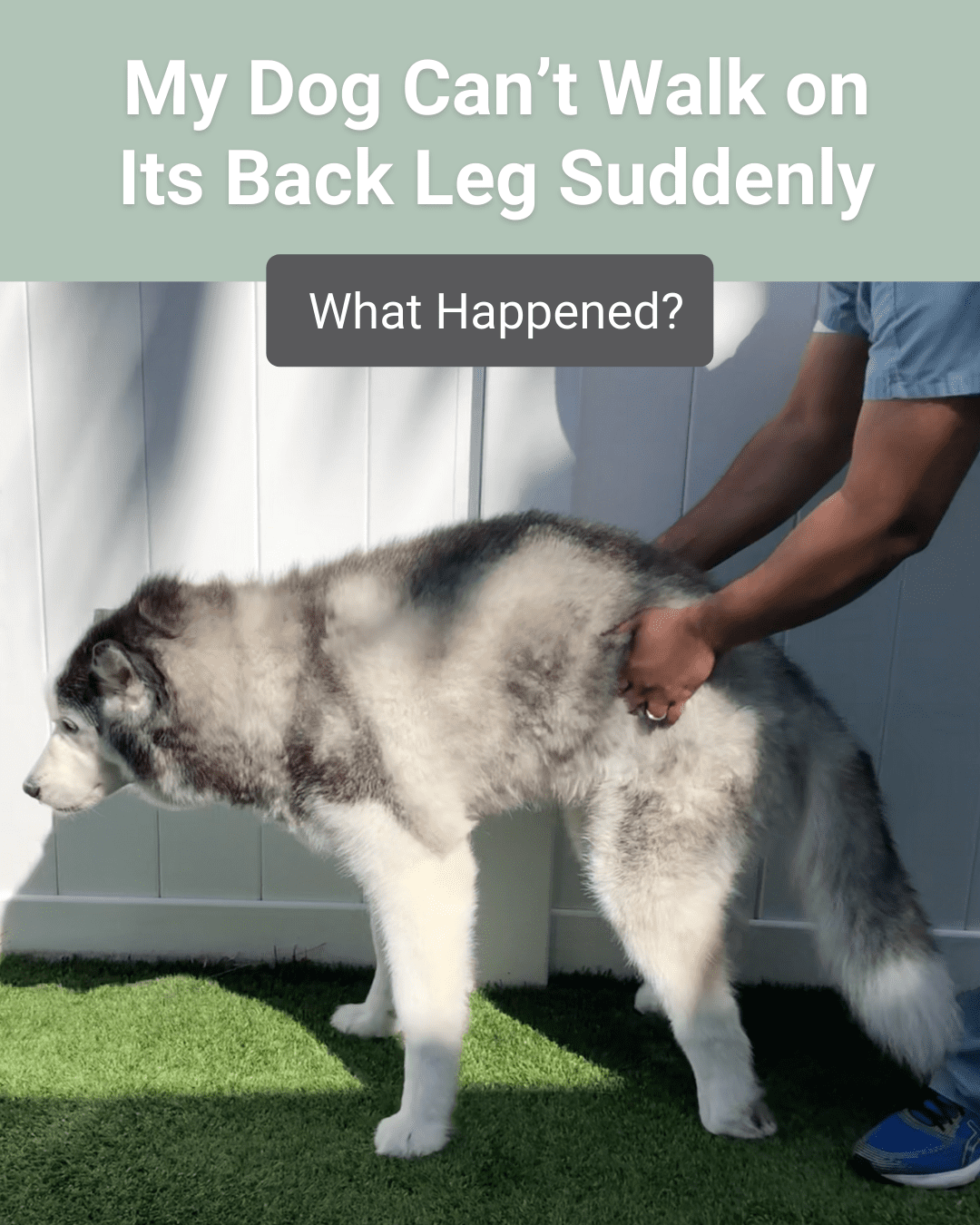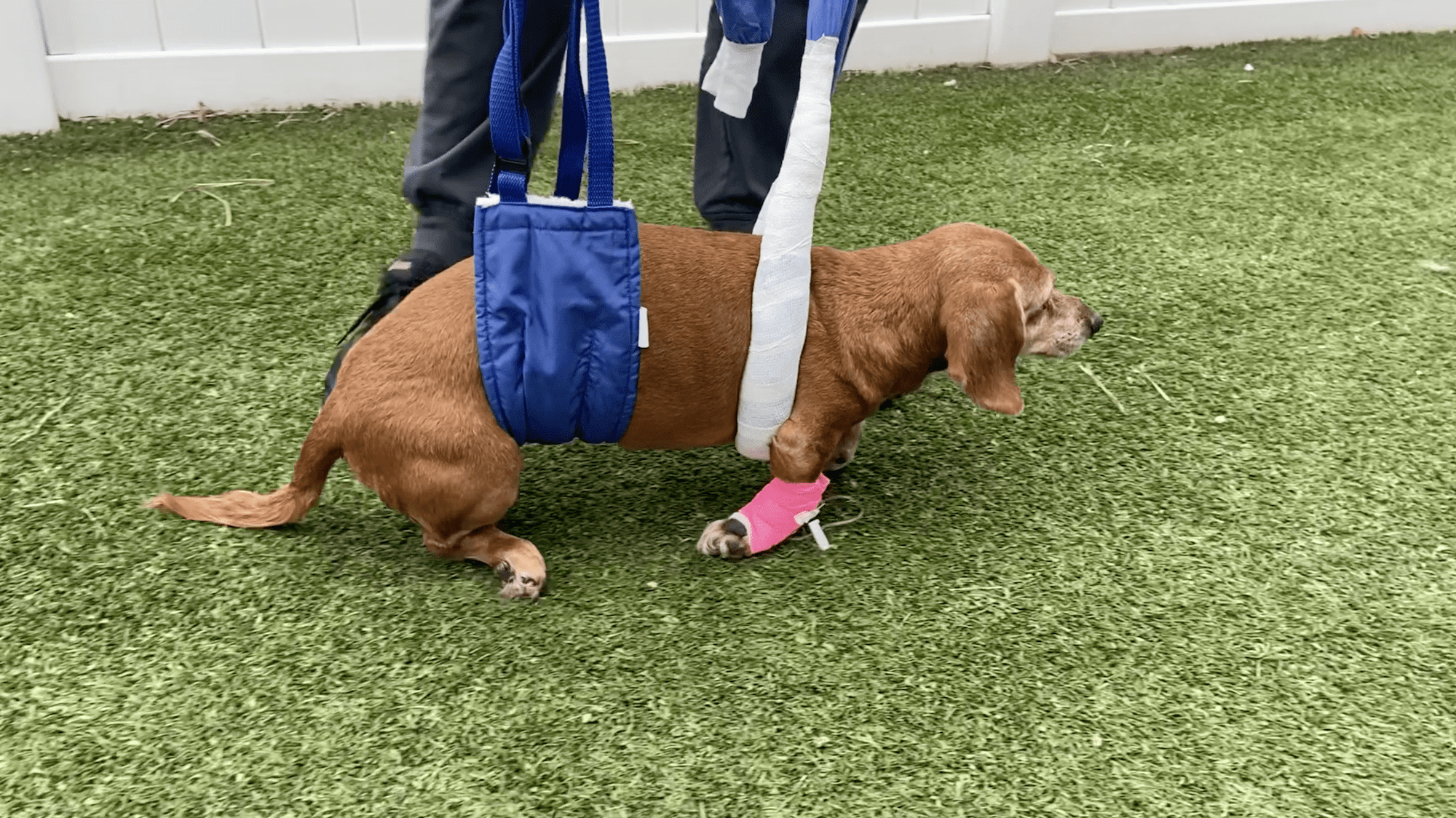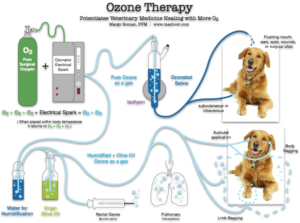Many dog owners face the worrying issue of their pets not being able to stand. This can be a sign of various health problems. So let’s jump to Why My Dog Can’t Stand Up?
Understanding the reasons behind this behavior is crucial for pet owners. Your dog not standing can stem from different causes. It might be due to injury, illness, or even age-related issues. Seeing your furry friend struggle can be distressing. Knowing what to look for can help you respond appropriately.
Early detection can lead to better treatment options. Different breeds may also be more prone to certain conditions. Familiarizing yourself with common reasons can prepare you for a vet visit. This understanding helps you provide the best care for your beloved companion. Let’s explore the potential reasons your dog might be having trouble standing.
Table of Contents
Introduction To Canine Mobility Issues
Canine mobility issues affect many dogs. These problems can make it hard for your dog to stand, walk, or run. Understanding these issues is vital. Early detection can lead to better care. Knowing the signs helps you support your furry friend.
Common Signs Your Dog May Be Struggling
Look for these signs that may indicate mobility problems:
- Difficulty standing up: Your dog may struggle to rise.
- Dragging hind legs: Look for signs of dragging or stumbling.
- Reluctance to walk: Your dog may avoid walks or playtime.
- Changes in posture: Watch for unusual body positions.
- Excessive panting: Heavy breathing can be a sign of pain.
- Whining or barking: Vocalizations may indicate discomfort.
Importance Of Addressing Mobility Problems Early
Acting quickly can improve your dog’s quality of life. Early treatment may prevent further issues. Here are key reasons to address mobility problems:
- Better Pain Management: Reduces suffering quickly.
- Improved Mobility: Helps regain strength and movement.
- Better Quality of Life: Enhances your dog’s daily activities.
- Cost-Effective: Early treatment may lower vet bills.
Don’t ignore the signs. Your dog depends on you for help.

Credit: healthypawsibilities.com
Assessing The Situation
When a dog can’t stand up, it can be alarming. Understanding the symptoms and behavior is essential. This helps in determining the next steps. Observing your dog closely will provide valuable insights. Knowing when to seek veterinary care is crucial.
Observing Symptoms And Behavior
Start by noting any changes in your dog’s behavior. Look for these common signs:
- Weakness: Does your dog seem weaker than usual?
- Lethargy: Is your dog less active or more tired?
- Pain: Does your dog show signs of discomfort?
- Loss of appetite: Has your dog stopped eating?
- Unusual vocalizations: Is your dog whining or barking more?
Check for physical symptoms too:
- Swelling: Look for swelling in legs or joints.
- Injury: Check for cuts or bruises.
- Difficulty breathing: Is your dog breathing normally?
Record your observations. This information helps the vet make a proper diagnosis.
When To Seek Veterinary Care
Know when to take action. Seek veterinary care if:
| Symptom | Action |
|---|---|
| Persistent weakness | Visit the vet immediately |
| Severe pain | Call your vet right away |
| Unresponsiveness | Seek emergency care |
| Signs of shock | Get urgent veterinary attention |
Timely intervention can make a difference. Always prioritize your dog’s health.
Common Causes Of Immobility In Dogs
Dogs can become immobile for several reasons. Understanding these causes helps you care for your pet. Here are some common reasons why your dog can’t stand up.
Age-related Joint Problems
As dogs get older, their joints can wear down. This can cause pain and stiffness. Here are some common age-related issues:
- Osteoarthritis
- Hip dysplasia
- Degenerative joint disease
These conditions can make it hard for your dog to move. Regular vet check-ups can help catch these issues early.
Injuries And Accidents
Injuries can happen at any time. A slip, fall, or rough play can hurt your dog. Common injuries include:
- Fractured bones
- Sprained ligaments
- Soft tissue injuries
Signs of injury may include limping or yelping. If your dog shows any of these signs, see a vet.
Neurological Disorders
Neurological issues can also cause immobility. These affect how the brain communicates with the body. Common disorders include:
- Intervertebral disc disease
- Canine distemper
- Brain tumors
Symptoms may vary. Look for signs like weakness or loss of coordination. Early diagnosis is crucial for treatment.

Credit: sevneurology.com
Medical Conditions Affecting Canine Mobility
Many dogs face mobility issues. Understanding the medical conditions that affect their movement is important. Some common problems include arthritis, intervertebral disc disease (IVDD), and hip dysplasia. Each of these can cause pain and limit mobility.
Arthritis And Its Impact
Arthritis is a common condition in older dogs. It affects their joints, causing pain and stiffness.
- Symptoms include:
- Difficulty standing or walking
- Reluctance to jump or climb stairs
- Limping or favoring one leg
Arthritis can be managed with:
- Pain relief medication
- Weight management
- Physical therapy
Intervertebral Disc Disease (ivdd)
IVDD affects the spine. It occurs when discs between vertebrae bulge or rupture.
This can lead to:
- Severe pain
- Weakness in the legs
- Loss of coordination
IVDD may require:
- Medication to reduce inflammation
- Rest and restricted activity
- In some cases, surgery
Hip Dysplasia
Hip dysplasia is a genetic condition. It affects the hip joint, causing instability.
Dogs with hip dysplasia may show:
- Pain in the hip area
- Difficulties getting up
- Waddling or unusual walking patterns
Management options include:
- Weight control
- Joint supplements
- Physical therapy
- Surgery in severe cases
Non-medical Factors
Many reasons can cause a dog to struggle with standing. While medical issues are common, non-medical factors play a big role. These factors can be emotional or environmental. Understanding these can help you support your dog better.
Fear And Anxiety
Fear and anxiety can deeply affect a dog’s ability to stand. Dogs may feel scared in new environments. Changes in their routine can also cause stress. Common causes include:
- Loud noises, like thunderstorms or fireworks
- New people or animals
- Changes in their home
Signs of fear and anxiety include:
- Shaking or trembling
- Hiding or cowering
- Excessive barking or whining
Helping your dog feel safe is key. Create a calm environment. Use positive reinforcement to encourage standing.
Environmental And Surface Challenges
The environment can also hinder a dog’s ability to stand. Different surfaces can affect their grip. Slippery floors can be hard for some dogs. Uneven ground can create problems too. Here are some common challenges:
| Surface Type | Impact on Dogs |
|---|---|
| Tile or Wood Floors | Slippery, may cause slipping |
| Grass or Dirt | Uneven, can make standing hard |
| Carpets | Soft, can be difficult to push off |
Consider using rugs or mats in your home. These can provide better traction. Ensure your dog has a safe space to move around.
Diagnostic Approach
Understanding why your dog can’t stand up is important. A proper diagnostic approach can help identify the issue. This includes several steps. Each step helps to find out what is wrong with your furry friend. Here are the main methods used:
Physical Examinations
A physical examination is usually the first step. The vet will check for:
- Signs of pain or discomfort
- Swelling in joints or limbs
- Muscle weakness
- Neurological signs
The vet will look at your dog’s overall health. They will also ask questions about your dog’s history. This helps to paint a clearer picture.
Advanced Imaging Techniques
Sometimes, physical exams are not enough. Advanced imaging techniques provide more detail. These include:
| Technique | Description |
|---|---|
| X-rays | Help view bones and joints. |
| Ultrasound | Shows soft tissues and organs. |
| CT Scans | Gives detailed cross-sectional images. |
| MRI | Best for soft tissues and brain. |
These tests help spot fractures, tumors, or other issues. They give a better understanding of the problem.
Laboratory Tests
Laboratory tests are essential in the diagnostic process. They can include:
- Blood tests to check organ function
- Urinalysis to look for infections
- Biopsies for tissue samples
These tests help to identify infections or diseases. They provide critical information for treatment.
Treatment Options And Management
Understanding why your dog can’t stand up is important. Treatment options vary based on the cause. Here are some effective methods for managing your dog’s condition.
Medications And Pain Relief
Medications are often the first step in treatment. They help manage pain and reduce inflammation. Common options include:
- Non-steroidal anti-inflammatory drugs (NSAIDs): Help with pain and swelling.
- Corticosteroids: Reduce inflammation and boost recovery.
- Joint supplements: Support joint health and mobility.
Always consult your vet before starting any medication. Dosage and type matter. Regular check-ups will ensure your dog’s safety.
Surgery As A Last Resort
Surgery is considered only if other treatments fail. It can correct structural issues. Common surgical procedures include:
| Surgery Type | Description |
|---|---|
| Hip Replacement | Replaces a damaged hip joint. |
| Spinal Surgery | Addresses spinal injuries or diseases. |
| Ligament Repair | Fixes torn ligaments in the knee. |
Surgery carries risks. Discuss these thoroughly with your veterinarian. Recovery will also require special care.
Physical Therapy And Rehabilitation
Physical therapy is beneficial for many dogs. It helps regain strength and mobility. Options include:
- Hydrotherapy: Uses water to reduce pressure on joints.
- Massage therapy: Relaxes muscles and improves circulation.
- Exercise plans: Builds strength and endurance gradually.
Work with a certified canine rehabilitation therapist. They can create a personalized plan. Regular therapy sessions will aid recovery.
Home Care Strategies
Taking care of a dog that can’t stand up can be challenging. Focus on creating a safe and supportive environment. A few simple strategies can help your furry friend feel more comfortable and cared for.
Creating A Supportive Home Environment
Make your home safe for your dog. Here are some tips:
- Remove sharp objects from the floor.
- Use non-slip mats to prevent sliding.
- Create a cozy resting area with soft bedding.
- Keep water and food bowls within reach.
Consider using ramps or steps. This helps your dog access different areas. Ensure all areas are well-lit. This reduces the risk of accidents.
Nutrition And Supplements
Good nutrition is crucial. It helps maintain your dog’s strength. Focus on high-quality dog food. Look for options rich in:
- Protein
- Vitamins
- Minerals
Consult your vet about supplements. They may recommend:
- Glucosamine for joint health
- Omega-3 fatty acids for inflammation
- Antioxidants to support overall health
Exercise And Weight Management
Regular exercise is important. Adapt activities to your dog’s ability. Short walks or gentle play can help. Keep an eye on their weight. Obesity can worsen mobility issues.
Use the following table to track your dog’s weight:
| Date | Weight (lbs) | Notes |
|---|---|---|
| 01/01/2023 | 50 | Normal weight |
| 01/15/2023 | 52 | Slight weight gain |
Consult your vet about the right diet and exercise plan. This helps ensure your dog stays healthy.
Prevention And Long-term Health
Maintaining your dog’s health is key. A healthy dog is active and happy. You can prevent issues like not being able to stand. Focus on regular check-ups and proper care.
Regular Veterinary Check-ups
Routine visits to the vet are essential. They help catch problems early. Schedule check-ups at least once a year. Older dogs need visits every six months.
- Check weight and diet
- Assess joint health
- Update vaccinations
- Conduct blood tests
Regular check-ups can lead to:
- Early detection of health issues
- Better management of existing conditions
- Improved overall well-being
Proactive Joint Care
Joint health is vital for mobility. Take steps to protect your dog’s joints. Consider the following:
- Provide a balanced diet rich in omega-3 fatty acids.
- Maintain a healthy weight to reduce stress on joints.
- Incorporate joint supplements like glucosamine.
- Encourage low-impact exercises like swimming.
These actions help keep joints strong. They can prevent pain and stiffness.
Recognizing Early Warning Signs
Pay attention to your dog’s behavior. Changes can signal health issues.
- Difficulty standing or walking
- Reluctance to jump or play
- Excessive licking of joints
- Changes in eating habits
Act quickly if you notice any changes. Early intervention can make a big difference.

Credit: sevneurology.com
Frequently Asked Questions
Why Can’t My Dog Stand Up Suddenly?
There are several reasons your dog might suddenly be unable to stand. It could be due to injury, neurological issues, or underlying health problems. If your dog shows this behavior, it’s crucial to consult a veterinarian for a proper diagnosis and treatment plan.
Early intervention can be vital for recovery.
What Should I Do If My Dog Can’t Stand?
If your dog can’t stand, remain calm and assess the situation. Check for visible injuries and avoid moving your dog too much. Contact your veterinarian immediately for advice. They may recommend bringing your dog in for an examination. Don’t wait too long, as prompt attention is essential.
Could It Be A Sign Of A Serious Illness?
Yes, a dog not being able to stand can indicate serious conditions. Diseases affecting the spine, muscles, or nerves may cause this issue. Additionally, severe infections or toxins can lead to mobility problems. Always seek veterinary advice to rule out any serious health concerns affecting your dog’s mobility.
Can Age Affect My Dog’s Ability To Stand?
Absolutely, age can significantly impact your dog’s ability to stand. Older dogs may suffer from arthritis, joint issues, or muscle weakness. These conditions can limit their mobility and make standing painful. Regular vet check-ups and proper care can help manage these age-related problems effectively.
Conclusion
Understanding why your dog can’t stand up is important. It helps you care for them better. Many reasons exist, like health issues or age. Always watch for signs of pain or distress. A vet can provide the best advice. They can help you find the right treatment.
Your dog deserves comfort and joy. With the right support, they can live happily. Take steps to ensure their well-being. Your love and attention make a big difference. Keep learning about your dog’s needs. It strengthens your bond and brings happiness to both of you.



